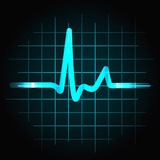What is the most likely diagnosis based on the ECG findings?
Anonymous Poll
33%
Atrioventricular nodal reentry tachycardia (AVNRT)
16%
Orthodromic Atrioventricular Re-entry Tachycardia (AVRT)
28%
Atrial tachycardia with 1st degree AV block
16%
Atrial flutter with 2:1 conduction ratio
8%
Atrial fibrillation
In the beginning, there are sinus beats that are conducted with 1st degree AV block. These beats are followed by ectopic atrial contractions which are not conducted through AV node (blocked PACs). However, an ectopic atrial contraction eventually triggers an AVNRT, a regular narrow complex tachycardia with relatively long RP intervals due to slow conduction through retrograde pathway in the AV node.
Special Thanks to my dear friend salvatore salvatore for providing the diagram.
Special Thanks to my dear friend salvatore salvatore for providing the diagram.
What is the most likely diagnosis based on the ECG findings?
Anonymous Poll
26%
AVNRT (PSVT)
54%
Atrial flutter
11%
Atrial tachycardia
9%
Atrial fibrillation
ECG features:
• Narrow complex tachycardia at ~160 bpm.
• Sawtooth flutter waves are seen best in the inferior leads (II, III, and aVF)
• There is a clear 2:1 relationship between the flutter waves (~320 bpm) and QRS complexes (~160 bpm).
• Narrow complex tachycardia at ~160 bpm.
• Sawtooth flutter waves are seen best in the inferior leads (II, III, and aVF)
• There is a clear 2:1 relationship between the flutter waves (~320 bpm) and QRS complexes (~160 bpm).
Which of following coronary arteries is most likely involved in this patient?
Anonymous Poll
55%
Left anterior descending artery (LAD)
11%
Left circumflex artery (LCX)
17%
Right coronary artery (RCA)
17%
Left main coronary artery (LMCA)
The ECG shows upslope ST-Depressions and peaked T waves in the anterior leads. this pattern is called “De Winter T wave” and seen in ~2% of acute LAD occlusions.
What is the most likely diagnosis?
Anonymous Poll
52%
Acute myocardial infarction complicated by Ventricular tachycardia
7%
Sinus tachycardia and massive myocardial infarction
17%
Atrial fibrillation with LBBB
23%
Hyperkalemia
